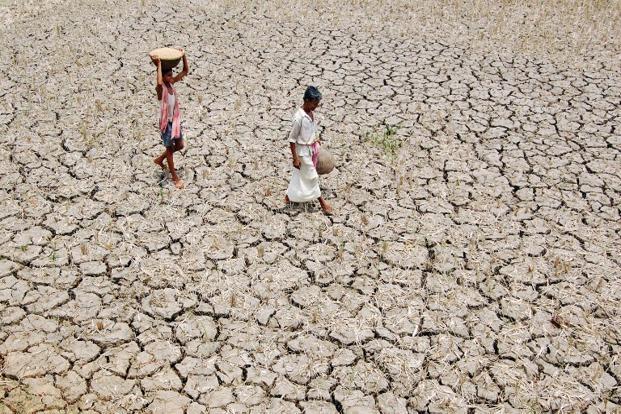Window To Real Gujarat #5: Agriculture Crisis Grips ‘Model’ Gujarat

Here are some facts about the state of agriculture in Gujarat, often described by BJP as the crucible for ‘model’ governance and development:
-
Between 2001 and 2011, the number of cultivators in Gujarat fell by 355,181, the bulk of which was marginal cultivators (those who cultivate only up to 6 months in a year). This is a decline of about 35% - one of the highest in the country. On the other hand, agricultural labourers increased by 16.8 lakh or an increase of about 50%, again, one of the highest in the country.
-
Over the years, farmer’s suicides have kept haunting Gujarat’s farmers. In a span of just the last three years (2013 to 2015) reportedly 1483 farmers committed suicide in the state.
-
Nearly 43% of farmers in Gujarat were indebted and among them, the average debt per household was Rs 126,109 in the year 2012 according to an NSSO survey report. For an ‘advanced’ state like Gujarat this is quite a substantial scale of indebtedness considering that the all India average is 45% indebtedness and average debt of Rs 153,640.
What is the significance of these facts? It is this: Gujarat, despite all the big talk of model governance and prosperity, is in the grip of the same dire agricultural crisis that is prevailing elsewhere in the country. A close look at agricultural output over the years shows that production of foodgrains, oilseeds and cotton has been virtually stagnating for the past 5-6 years after the initial spurt during 2001-2006, which was mainly caused by the reaching of Narmada waters to distant hinterland of western Gujarat and the introduction of Bt cotton.
With approaching Assembly elections, Gujarat’s ruling BJP has suddenly sought to rectify some of its mistakes and provide relief to suffering farmers. It has raised the Minimum Support Prices for various cash crops in the state and announced waiver of Goods and Services Tax (GST) for farmers using micro-irrigation systems. But, delay in procurement of this year’s kharif produce has been adding to the distress of the farmers.
The condition of ever growing army of landless agricultural workers is of serious concern since the minimum wage in the state is only Rs 150 per day, one of the lowest in the country.
This chillingly distressing condition of the agrarian sector in Gujarat, and the crores of people linked to it, has led to a spate of farmers’ protests against a slew of problems ranging from land acquisition to remunerative prices. All of them indicate the growing disillusionment of the farming community from the much touted Gujarat ‘model’ of governance and development.
Farmers Protests
Recently, the Gujarat government has denied permission to a fourteen-day motorbike rally from South Gujarat's Bhilad to North Gujarat's Amirgadh, called by Khedut Samaj Gujarat (KSG), a farmer’s organization which intended to campaign for voting against BJP for their ‘anti-farmer’ policies. A 2005 government resolution allocating 45.6 lakhs hectares of land for corporate farming has resulted in the formation of the Zameen Bachao Andolan in Kutch. Also in Kutch, when Gujarat government invoked the Bombay Tenancy and Agricultural Lands Act to put a freeze on over 20,000 acres of land, depriving the farmers from their rights on the land they possessed for decades resulted in angry anti- BJP sentiments. With the two year struggle in 2001-2002 against a proposed Special Economic Zone (SEZ) local farmers of Okhamandal were able to stall the project. Over the controversial Sardar Sarovar Project (SSP) row, a number of Gujarati farmers were also part of the agitations led by The Narmada Bachao Andolan. Many of the displaced farmers from the same project are yet to get their due compensation and are agitating in Surat district.
In 2013, with a number of protests led by Jamin Adhikar Andolan Gujarat (JAAG) against the government’s move to allot more than 50, 000 acres of fertile land to a Maruti manufacturing plant affecting farmers from 44 villages, the BJP government has downsized the investment zone to eight villages from the original 44.
In the case of the implementation of Public Distribution System in the state, on which large numbers of the marginalized sections of people including agricultural labourers are dependent, Gujarat under BJP rule has been one of the worst performing states. By 2014, Gujarat was also the only State which had a decline in the per capita purchase of PDS grains.
Agrarian Distress Fuelling Caste-based Movements
One direct consequence of the agrarian crisis in Gujarat has been the rise of various caste based movements of the peasantry, demanding reservations in govt. jobs. Most prominent among these is the Patidar agitation, which mobilized the largely land owning and trading Patel community. Similar movements by OBCs have also emerged. Dalits and tribals, comprising agricultural workers or small/marginal farmers too are agitating against atrocities or denial of rights. While the forthcoming electoral battle has amplified these movements, their roots in the agrarian crisis are self-evident. Increasing unemployment, both in agriculture and in industry, is adding fuel to this fire. All this represents a comprehensive failure of the Gujarat model of development.
Get the latest reports & analysis with people's perspective on Protests, movements & deep analytical videos, discussions of the current affairs in your Telegram app. Subscribe to NewsClick's Telegram channel & get Real-Time updates on stories, as they get published on our website.























